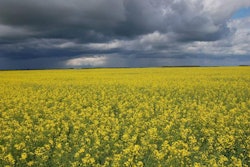Tonisity recently held webinar highlighting effects
Animal health and nutrition company Tonisity recently held a webinar highlighting the effects of heat stress in lactating sows. The webinar was presented by Jean-Yves Dourmad from the National Institute of Agricultural Research in France (INRAE). With temperatures starting to rise across Europe, Tonisity offered attendees the opportunity to gain expert knowledge on how to spot symptoms of heat stress, the impacts it has on sow performance and identify preventative measures for managing stress in lactating sows.
Lactating sows are extremely sensitive to heat stress. Dourmad states, “lactating sows have a low thermo-neutral zone, generally between 12 and 20°C. This is due to their high feed intake, high milk production and their intensive metabolism.” Sows will show signs of heat stress through their general behaviour and have developed their own mechanisms for adapting to heat. For instance, by focussing on their breathing, they increase their respiratory activity to expend internal heat. They also adapt to heat by finding cool surfaces to lie on and increase their water intake to keep that thermo-neutral zone at its optimum level. Another approach they take is to reduce their feed intake, but this can have a negative impact on their reproduction capability. They also reduce milk production which can have knock on effects on piglets weaning weights.
With climate change, the frequency and intensity of heat periods is increasing. In cases of high temperature, above 25°C, sows will decrease their feed intake which increases the bodyweight mobilisation, leading to reduced reproduction. They decrease their milk production, causing a decrease in the litter bodyweight gain which increases production costs leading to a negative impact on profitability.
Some practical methods for improving sow performance during hot temperatures include focussing on housing and cooling equipment. Fan ventilation, fogging and pad cooling can be effective ways of reducing sows’ temperatures. “Another approach is to cool their drinking water which can have an immediate impact and is an effective method of reducing the sow’s internal body temperature,” Dourmad claims.
Dourmad recommends, “reducing the heat increment of the lactating diet by increasing the net energy, providing less protein, more amino acids, more fat and starch in the diet.” He also advises to adapt the nutrient concentration to compensate for reduced feed intake by providing amino acids, minerals and vitamins. Another recommendation was to adapt their feeding times and feed sows during the cooler periods of the day.
Dourmad also highlighted the importance in feeding piglets to compensate for the sow’s decreased milk production. Their thermo-neutral zone is much higher than lactating sows meaning they can better cope with heat stress. However, they do face a nutritional deficit due to reduced milk production. It is important to incorporate precision feeding to adopt feed composition to temperature.
For a link to Dourmad’s other publications, visit: https://www.researchgate.net/profile/Jean_Yves_Dourmad









